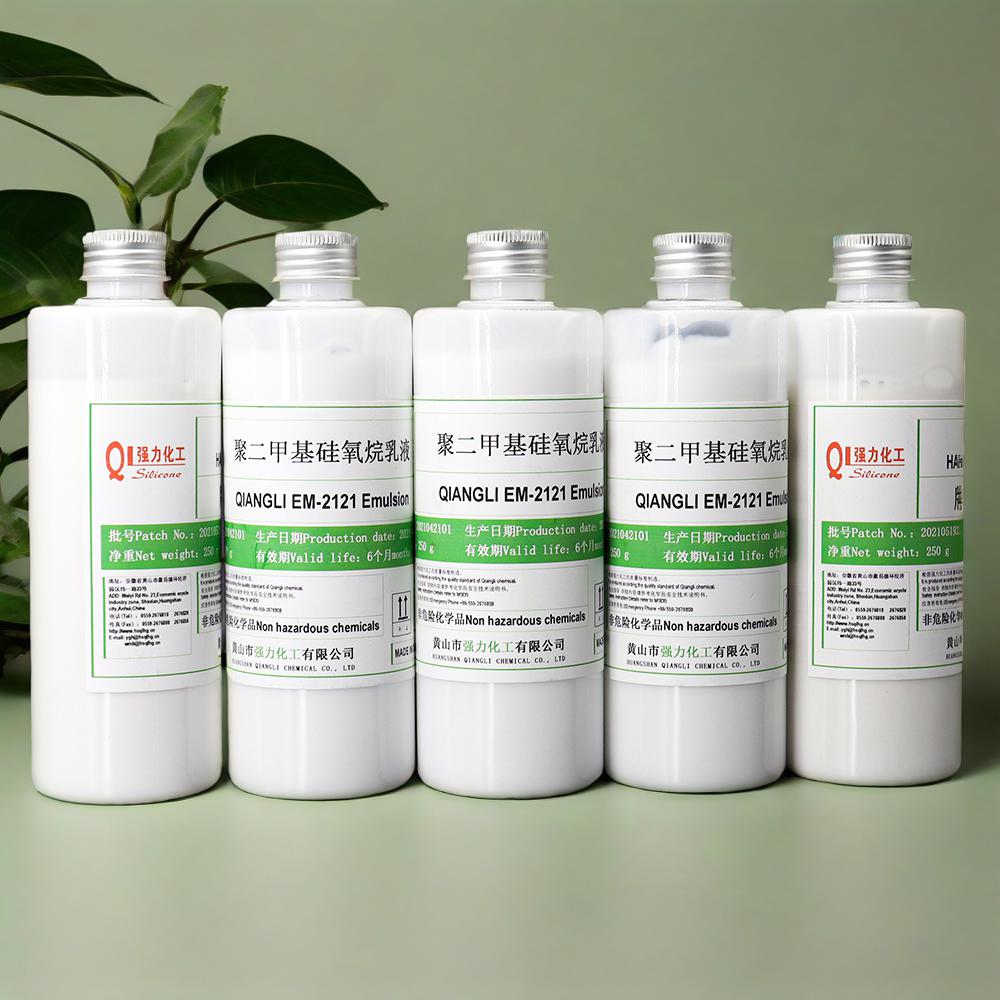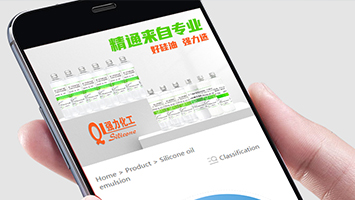I. Technical feasibility verification
Ingredient compatibility The non-ionic emulsification system (polyether-modified siloxane) of dimethicone emulsion (such as IOTA360 emulsion, solid content 60%) has good compatibility with common plastics used in dashboards (such as ABS, PVC)11. Its low surface tension (20-21mN/m) and lubricity can form a uniform protective film and improve gloss (60° gloss value can reach 80-90GU).
Solid content and dilution ratio
Recommended dilution range: diluting the 60% solid content emulsion to 5%-15% for use (i.e., a water dilution ratio of 1:3 to 1:12) can balance the film-forming effect and construction convenience. For example, a commercial automotive interior polish (containing 5% silicone oil emulsion) can effectively reduce the surface friction coefficient (μ<0.2) after dilution, while avoiding greasy feeling.
Process suggestion: Use ultrasonic emulsification equipment (frequency 20-40kHz) to refine the emulsion particle size to less than 200nm, which can improve the uniformity and adhesion of the film layer.
2. Performance optimization method
Silicone oil viscosity selection
Low viscosity (100-500cst): such as Dow Corning PMX-200 100cst silicone oil, suitable for rapid film formation and enhanced smoothness, recommended addition amount 3%-5%.
Medium and high viscosity (1000-2500cst): such as Skarlan PMX-200 1000cst silicone oil, can improve gloss and durability, recommended addition amount 1%-3%.
Mixed use: low viscosity and high viscosity silicone oil are compounded (such as 3:1 ratio), which can take into account both construction performance and long-term performance, and the release force can be controlled at 100-300gf.
Synergistic additives
Antistatic agent: Adding 0.5%-1% quaternary ammonium salt antistatic agent (such as hexadecyltrimethylammonium bromide) can reduce dust adsorption and maintain gloss.
Antifogging agent: Compounding 0.3%-0.8% polyethylene glycol (PEG-400) can improve surface hydrophilicity and prevent condensation fog.
III. Construction process guide
Pretreatment
Cleaning: Use a neutral detergent (pH 7-8) to remove surface oil and avoid uneven dispersion of silicone oil emulsion.
Drying: Use compressed air or a dust-free cloth to dry thoroughly to ensure that there is no residual moisture on the surface.
Coating method
Spraying: Use an atomizing spray gun (pressure 0.2-0.3MPa) to spray evenly, the film thickness is controlled at 5-10μm, and the drying time is 10-15 minutes.
Wiping: Use a microfiber cloth to dip the diluent and wipe in circles to avoid excessive localization and greasy feeling.
Post-processing
Curing: Dry naturally at room temperature for 2 hours, or accelerate curing in a 50-60℃ oven (30 minutes) to increase the hardness of the film layer (pencil hardness 2H).
Polishing: Use a wool polishing wheel (speed 1500-2000r/min) for light polishing to enhance the gloss uniformity.
IV. Performance testing and verification
Key indicators
Gloss: 60° gloss value ≥85GU (ASTM D523 standard), better than traditional wax-based polishing agents (about 70GU).
Weather resistance: After 1000 hours of UV aging (QUV-B 313nm, 60℃), the gloss retention rate is ≥80%, without yellowing or cracking.
Abrasion resistance: After 500 cycles of Taber abrasion test (CS-10 wheel, 1000g load), the film thickness loss is ≤10%.
Actual application case
A brand of interior polish: Using 5% solid content dimethyl silicone oil emulsion (viscosity 1000cst), combined with 0.5% antistatic agent, in the actual measurement of the automobile 4S shop, the dust adsorption on the dashboard surface was reduced by 60%, and the gloss remained stable within 3 months.
DIY user feedback: Use 350cst silicone oil diluted to 10% solid content, apply it by sponge, the dashboard presents a natural matte effect, the hydrophobic angle reaches 110°, and there is no silicon spot residue.
V. Precautions and Risk Control
Risk of Overuse
Surface stickiness: Adding more than 15% may cause stickiness, and the optimal amount needs to be determined through small sample testing.
Impact on adhesion: If glue or film is required later, it is recommended to choose low-migration silicone oil (such as epoxy-modified silicone oil) and test the residual adhesion through the NITTO 31B tape method.
Impact of environmental factors
High temperature environment: Long-term exposure to above 80℃ may cause silicone oil migration. It is recommended to reapply once every quarter.
Chemical compatibility: Avoid mixing with strong alkaline detergents (pH>10) to prevent emulsion demulsification.
Conclusion
Dimethyl silicone oil emulsion with a solid content of 60% can be effectively used for polishing automotive dashboards by diluting to 5%-15% (recommended 1:3 to 1:12 water dilution), selecting a suitable viscosity (100-2500cst) and adding synergistic additives (antistatic agent, antifogging agent). Its performance can meet the requirements of glossiness (≥85GU), weather resistance (gloss retention rate ≥80% after 1000 hours of UV aging) and abrasion resistance (film thickness loss ≤10% after 500 Taber tests). It is recommended to give priority to non-ionic emulsions (such as EM2121, Dow Corning 0349), and refer to the application experience of commercial products (such as a certain brand of interior polish) to optimize the formula and process parameters through sample testing.




